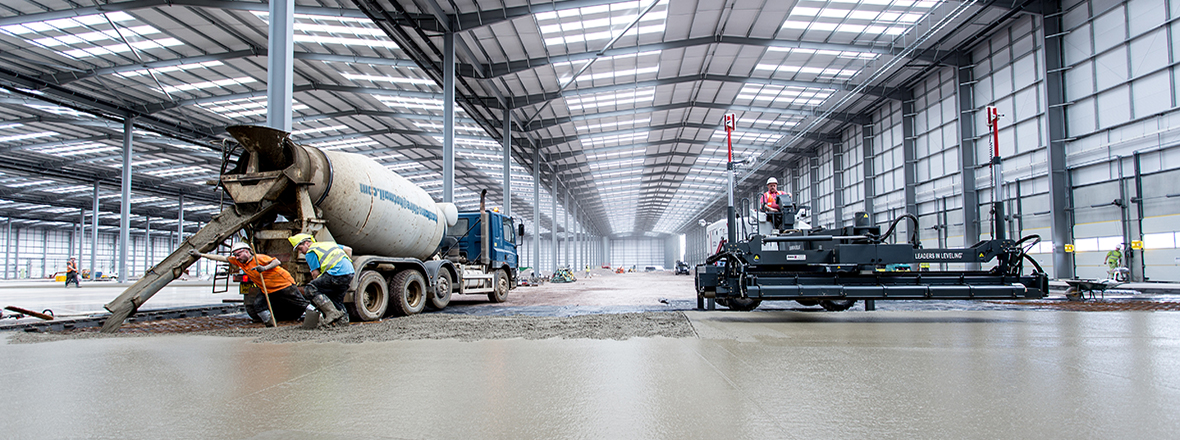Achieve Floor Flatness and Levelness with F-Numbers

Flatter and more level concrete floors are made possible with the F-number system. F-numbers were first used in 1983 on a commercial project, and we continue to use them today in order to achieve floor flatness and levelness. The degree of flatness and levelness is expressed using two numbers: FF (flatness) and FL (levelness). These F-numbers make up the face floor profile.
In order to derive the F-numbers, one must process data from a large number of measurements. The statistical approach and accurate instruments used to collect this data make the method effective for achieving flatness and levelness. However, it is sometimes difficult to understand exactly what these numbers mean. Below, we will break these numbers down so that you can better understand how F-numbers work.
How to Check Floor Flatness
Slabs consist of concrete waves, which have amplitudes and wavelengths. These waves cause a roughness to develop on the slab’s surface. Flatness (FF) measures how rough or bump the finished surface is.
To find the floor flatness using F-numbers, you measure the elevation differences, d, between points on the floor, one foot part on a straight line. You calculate the differences, q, between all of the adjacent d values. Then use the mean and standard deviation of the q values to determine the FF number.
The mean gives you the average difference from the design value, or lets you know how off target you are. The greater the average difference, the larger the average bump on the slab’s surface. Whereas the standard deviation shows how much variation there is within your data measurements. With a small standard deviation the transition between bumps is smoother than a large standard deviation.
Measuring Concrete Levelness
Levelness indicates the slope or tilt of a slab. FL tells you to what degree the surface of the slab approaches its design inclination, often horizontal.
Levelness is measured in a similar way to flatness. To measure levelness, use the differences, z, in elevation between two points that are 10 feet apart. The mean and standard deviation can then be calculated. To calculate FL, add the absolute value of the z mean to three times the standard deviation, then invert the number.
Flatness numbers are on a scale of 10 to 150, and most slabs fall in the range of 15 to 100. The minimum FL and FF values needed will depend on the building type. Some buildings need very flat slabs, while others do not.
For more information about F-numbers, check out our helpful F-Numbers Handbook.
Achieve Floor Flatness with Somero’s Product Line
If you want to achieve the ultimate floor flatness and levelness, explore Somero’s line of advanced equipment. Somero® is the industry leader in innovative and productive concrete leveling solutions. Our equipment gives you, the concrete contractor, more control and options, making it easier to become more efficient, productive and profitable.
If you have a question about any of our equipment or want to learn more about our innovative product line, contact us today through our website or call (239) 210-6519.
